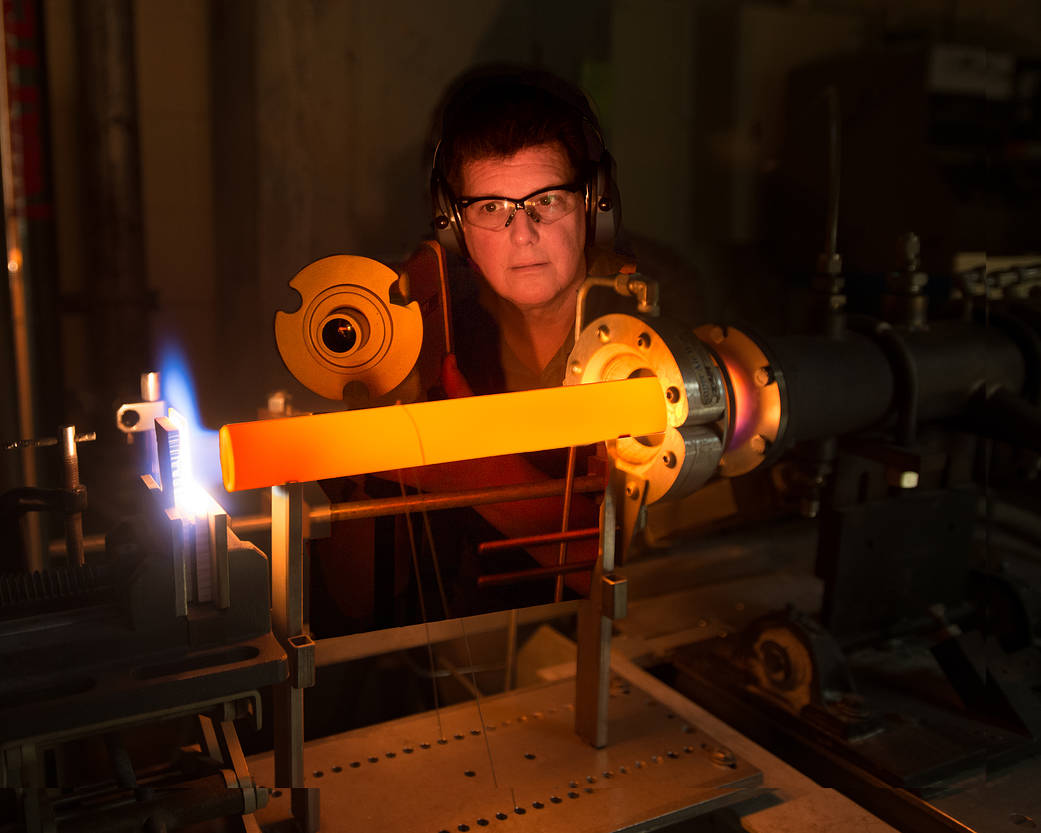Test engineer Michael Cuy subjects a coated silicon carbide sample to the high temperature, high-velocity environment of an operating aircraft engine at NASA Glenn’s Fuel Burner Rig. This unique facility is used to test advanced coatings developed by Glenn researchers to protect aircraft engine parts from the punishing combustion environment encountered during flight.
Modern engines utilize parts made of ceramic matrix composites because they are lightweight and can withstand high temperatures. However, they must be protected from the damaging effects of water vapor and high velocity particulates such as dust and sand found in all airport environments. This is a particular problem in hot and dry climates worldwide. Exposure to the corrosive effects of sea salt environments can also degrade engines. Durable coatings protect and minimize damage from hazardous exposure.
The facility’s eight test cells are equipped with jet fuel combustors and can subject coated samples to high temperatures up to 2,700 degrees Fahrenheit, and airflow and particulate velocities up to Mach 0.3.
Image Credit: NASA
Bridget R. Caswell and Mark Grills (Wyle Information Systems, LLC)





























